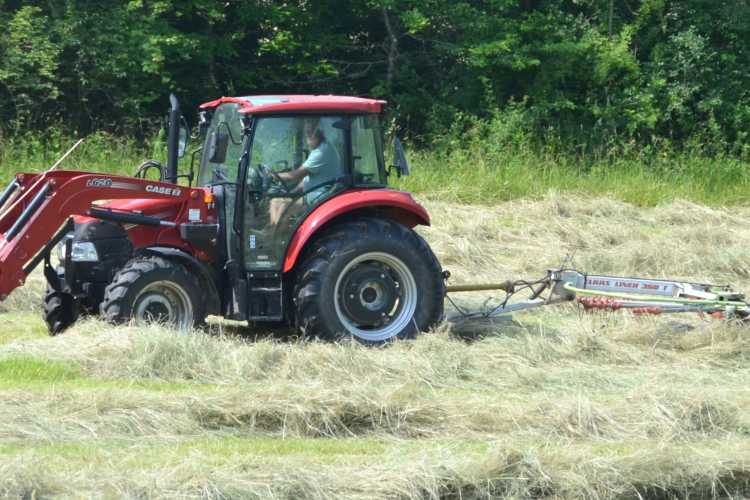Indian farmers eye green revolution 2.0: Travelling through rural India today reveals more than picturesque landscapes and resilient communities—it reveals transformation. This revolution is not heralded by slogans or mass protests. It does not erupt on social media or flash across TV tickers. Instead, it rises steadily from the soil itself. From the mustard fields of Rajasthan to the fruit orchards of Maharashtra, a new agricultural renaissance—rooted in natural farming, empowered by technology, and led by women—is quietly rewriting the script of rural India.
This is not nostalgia-driven romanticism. This is a data-backed, digitally powered, community-driven revolution that is redefining productivity, sustainability, and rural dignity. India’s farmers, once seen as vulnerable and dependent, are increasingly at the heart of a transformative ecosystem that blends ancient wisdom with modern science.
READ | Climate change: India must rethink its heat action plans
Natural farming: Tradition meets technology
India’s move towards natural farming is a return to the roots, but with sharper tools and clearer intent. At its core, natural farming eschews synthetic fertilizers and harmful pesticides. Instead, it builds soil health through cow-based bio-inputs, microbial solutions, and green manure. The science behind this is not anecdotal—it is measurable. Data from WOTR and various state-backed initiatives show improved soil organic carbon, higher water retention, and enhanced nutrient density in crops.
The economics is compelling too. Farmers report higher net incomes due to reduced input costs and greater resilience to climate variability. The shift, increasingly supported by agricultural universities and farmer producer organisations (FPOs), is no longer a marginal experiment. It is scaling across districts and states, aided by government programs such as Bhartiya Prakritik Krishi Paddhati (BPKP).
Rise of Drone Didis
If natural farming reclaims the earth, India’s women are claiming the skies. The emergence of Drone Didis—rural women trained to operate drones for precision agriculture—is among the most powerful stories of the moment. These women, many from marginalised communities, are mastering GPS mapping, aerial spraying, and multispectral imaging.
Under schemes like the Namo Drone Didi initiative and local cooperative efforts, thousands are becoming certified drone pilots. They not only deliver bio-inputs with accuracy but also monitor crop health and identify pest outbreaks before they cause damage.
This is technological empowerment in its purest form. It reduces labour burdens, cuts costs, and boosts yields—while restoring agency and pride to rural women. In a deeply patriarchal agrarian setup, these skybound sisters are symbols of both economic progress and social transformation.
Water wisdom: From crisis to conservation
No farming model can thrive without water security. For decades, Indian agriculture has been held hostage by monsoon unpredictability and groundwater depletion. But that dependency is being broken—quietly but methodically—through a revival of watershed-based models.
Community-driven efforts, aided by GIS mapping and public funding under MGNREGA, have created decentralised infrastructure: check dams, farm ponds, contour bunds, and recharge tanks. This mosaic of micro-interventions ensures that every drop is harvested, stored, and reused.
The result? Even in years of erratic rainfall, soil moisture persists, groundwater stabilises, and crop failure is mitigated. This is no less than a Jal Kranti—a decentralised water revolution. India’s farm future depends on it.
Indian farmers eye 10X income
For decades, the Achilles heel of Indian agriculture was income stagnation. Even when yields rose, farmers remained trapped in low-value cropping cycles. That’s now changing, thanks to multi-cropping, value-added processing, and global market integration.
Smallholders in Andhra Pradesh are cultivating turmeric, moringa, and mushrooms on the same plot—tripling annual income. In Punjab, traditional wheat farms are now lined with export-ready baby corn and strawberries. In Maharashtra’s Nashik, precision viticulture sends grapes to Europe under controlled microclimates. The crop is no longer just food—it’s a global commodity.
What makes this shift credible is the enabling infrastructure: farm-gate processing units, cold-chain logistics, and integration with platforms like ONDC. The Indian farmer, long a price-taker at the mercy of mandis, is now entering global supply chains with confidence.
Building the Bharat model
The big picture here is not just an agricultural strategy—it is a developmental model. A uniquely Indian blend of data, dignity, and decentralisation is emerging.
Science provides the validation, technology ensures precision, community wisdom secures participation, and policy opens the door through credit, training, and market linkages. Women lead local institutions; youth bring digital literacy; and the farmer finally sits at the centre, not the margins, of the value chain.
This is Atmanirbhar Bharat at ground level—resilient, inclusive, and scalable. It is also climate-resilient, socially equitable, and economically sound.
Islands of success to national mission
And yet, this remains a scattered success story. If India is to truly scale this Kranti, pilot projects must give way to a national mission. A credible roadmap would involve:
- Converting 100 million hectares to natural farming by 2030;
- Training and deploying 10 million Drone Didis across gram panchayats;
- Creating 100,000 water harvesting structures every year;
- Establishing farmer data cooperatives for democratising agri-intelligence;
- Setting up Export Excellence Hubs for high-value crops.
These are not utopian targets. They are feasible, especially with converged funding, decentralised governance, and public-private innovation.
A moral and strategic imperative
What began as a whisper in the fields has grown into a quiet roar. The task ahead is not merely administrative—it is moral. It demands that India respect its farmers not just with subsidies, but with systems that enhance autonomy, profitability, and pride.
This is not just economic planning—it is nation-building. A strong, self-reliant Bharat cannot be built on the back of distressed agriculture. Nor can global climate goals be met without transforming the way India farms.
As the sun sets over a millet field in Vidarbha, and the whirr of a drone fades into the twilight, a new promise hovers in the air. One where no farmer is left behind, no woman is left powerless, and no drop of rain goes unharvested.
This is not a moment of optimism. It is a moment of resolve. And if India gets it right, the world will watch and learn.

